Master racquet technician Michael Gordon contacted me to write about his HEAD TiS6 Frankenstein project. How could I say no?
HEAD TiS6 Frankenstein
This project came about from using a 107″ Head radical in an 18×19 string pattern for a year. I found the larger head size created a larger sweetspot and the denser string pattern helped keep the power in check. I liked it, and it got me wondering why tennis brands don’t make larger head size rackets geared towards good-level players who try to hit like pros, but without the world-class timing they possess.
I then came across an old Head TiS6 that someone had donated to my tennis club as a spare. I’m sure many of you will be familiar with this as the racket of choice for senior players looking for easy power and a large sweetspot. While looking at the frame I noticed the string pattern in the middle was fairly dense, with the central eight mains being in the throat before ‘fanning out’ towards the head. It’s a fairly unique design of string pattern. It got me considering if I could drill new holes in the head of the racket to make the central mains stay straight rather than fan, plus two new main holes at the bottom of the head to take the widest top grommets straight down making a total of 20 mains.
Ps. You can check out the original HEAD TiS6 at Tennis Warehouse or Tennis Only. Ds.
Don’t do this at home!
Now I wouldn’t recommend you give this one a go at home! I’m fairly experienced with a drill so I thought why not give it a try… Having cut out the strings, I marked up on paper where I thought the bottom grommets would match the ‘new’ top ones. It needed 12 New holes drilled to complete the pattern, plus I turned an obsolete main grommet into a cross at the very top. This made a Head TiS6 with a 20×20 string pattern. The problems with the TiS6 for higher-level players don’t end at the pattern, though. More had to be done. Firstly it weighs 225g!! So 80g of weight later I had it at a nicer 305g and a decent balance. It’s also 27.75″ in length, so next the final 0.75′ had to come off the handle. Once, I’d put it back together and strung it up (thankfully it didn’t break!) I was ready for testing.
Next was the playtest: My first impressions were this thing is good! It’s actually very useable, a huge sweetspot and decent control. It was a little more sluggish to move, but actually not that noticeable, and I felt that was worth the trade-off for such a big margin for error on the sweetspot. I got some funny looks coming onto the court with a head TiS6, and probably more so when I started hitting flat-out with it. However, I’m not one to be easily satisfied, and I started to think ‘what if it was softer?’ and ‘what if the crosses were denser too?’.
From DIY to something more serious
In the end, my curiosity got the better of me once more. After some conversations with a few factories I came across one producing essentially the same TiS6 frame. I asked if they would be willing to send me a sample with a softer RA stiffness, heavier weight, head light balance, 27″ length, and a denser string pattern. I got a yes to all except the string pattern, which was the most important part of the project! So I took a gamble on my own DIY skills and asked if they could send me two frames with the above characteristics but absolutely no grommet holes drilled at all (I would love to know what they thought of me…). I got a yes!
One month later, the frames arrived. Having strung thousands of rackets over the years, seeing some without any holes was odd, to say the least. It was time to design the string pattern. I didn’t have a number of strings in mind, only that it needed to be quite dense to control the large head size. I took an old favorite dense pattern of mine, the Angell K7 lime (18×20), and measured the gaps between its strings. Having marked out the head size on the 115″ frame, I then drew a string pattern based roughly on these numbers. The template came out as a 20×24 pattern! Next, it was a case of marking the pattern on the frame ready for drilling.
This was the part I was most nervous about. Carbon fiber is not that easy a material to drill cleanly. I got some special tools, including a high-speed mini drill called a Dremel, and set to work. Amazingly it came out good the first time with no cracks or splits in the carbon fiber. I then simply used individual replacement grommets cut down to size and bumper guard tape instead of a real bumper guard. Unless you got up really close it just looks like a regular OS frame. I somewhat nervously strung it up at 56/58lbs (tighter because of the head size) with my regular setup, which I used at 48/50lbs on the 98″ Angell K7 mentioned earlier before testing it on my ERT300. The dynamic tension reading was actually quite a lot tighter than the Angell, so I was hopeful the dense pattern would be doing its job of making the stringbed tighter/controlled. Having used over 14m of string, it also added a fair bit of weight to the head, so I ended up adding some to the handle to get the balance in place again.
Strung specifications of the Frankenstein frame
Here are its final strung stats with an overgrip:
Static weight: 353g
Balance: 320mm
Swingweight: 325
String pattern: 20×24
All that was left was to play-test it. Thankfully it delivered everything I’d hoped for. It plays, for the most part, like a solid, dampened player’s frame. Good control, a decent feel and solid off fastballs. It has a slightly lower launch angle than ‘spin-friendly’ rackets, but it’s still able to generate enough spin. The main characteristic though, and the reason for this project to begin with, was the sweetspot is huge. I could tell when I wasn’t hitting the ball completely clean off the centre but you did have to concentrate to notice as it still felt good almost anywhere, and you could still hit a decent shot off anything that wasn’t a full miss hit. In short, it plays like a player’s racket but with way more forgiveness on off-centre hits.
Has it lived up to expectations?
I’ve been using it for a month now and it has lived up to what I was looking to achieve. There is still one question unanswered for me though, why don’t big brands offer this? I can only assume it’s because you wouldn’t get a top pro using it. They don’t need extra help with timing and it does sacrifice (although not much actually) manoeuvrability. So would it be hard to market/endorse and therefore not get the sales among the rest of the tennis world that may actually benefit from it?
Down the line I may see if one of the racket factories I spoke to could make a batch of 200 frames like this professionally made/drilled, but also with a thinner beam than the mold they stocked in my sample. If this is something you may be interested in please email me on [email protected] and if I get enough interest I will look into the next stage…..
About me (Mike Gordon)
I’m a tennis coach and racket technician from the UK. I’m an LTA accredited coach, and have passed the ERSA master racket technician and pro stringer qualifications. I’m a huge fan of tennis gear and love to help people find the perfect set up for their style of play.
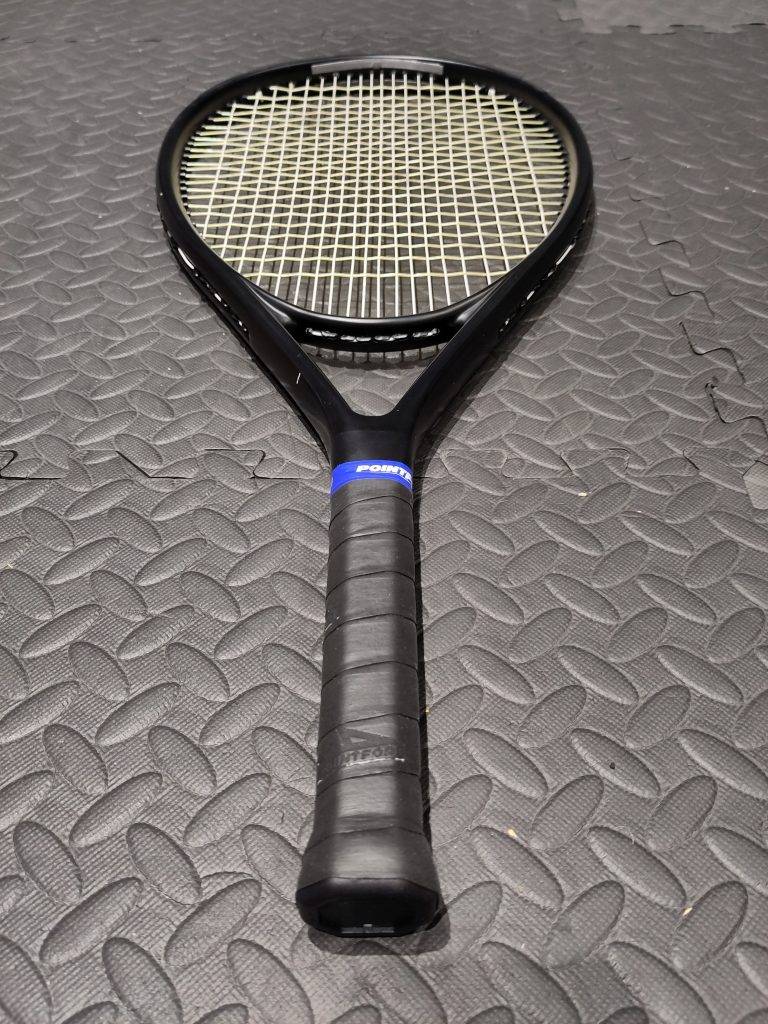
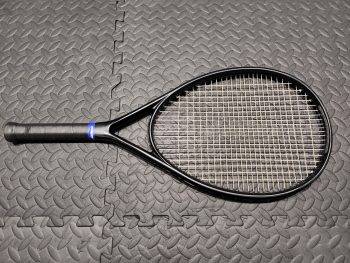
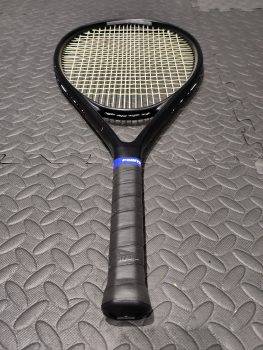










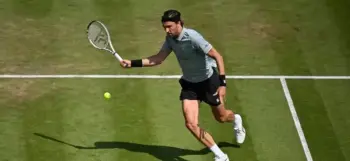
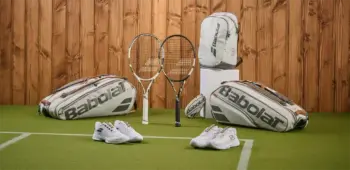



I know it’s not technically oversized, but this reminds me a bit of what the Head Gravity essentially is
Big head size (+teardrop shape), reasonably tight 18×20 pattern
Could probably say the same about other 100″ 18x20s – but the Gravity (Pro or Tour) is the one that most suggests to me that this is what the racquet is specifically after: big head with tighter pattern to compensate. More so than the Speed Pro or others
Great, fun article to read!
Glad you enjoyed it. Feel free to email me if you want to know more about it. Mike
I actually tested this racket back to back with a head gravity. The gravitys string pattern is not as dense as this one by a fair margin. The gravity is more like a denser 16×19 with how it plays I found, this one plays like a dense 18×20. Lots of control, lower launch angle.
Mike I applaud your effort to develop an innovative new racket design. However, nothing as densely strung will offer control like a paddle. What you will lose is power. You must be as big as Paul Bunyon or Hulk Hogan. I myself being a stringer have experimented with different string designs. The bottom line is that most good players will hit the ball in the center of the racket consistently. Nothing takes the place of natural talent. To me you should try to use a bowling brace to repeat your strokes repeatedly.
Good Luck With Your Quest,
Stu/FORENSIC STRINGER